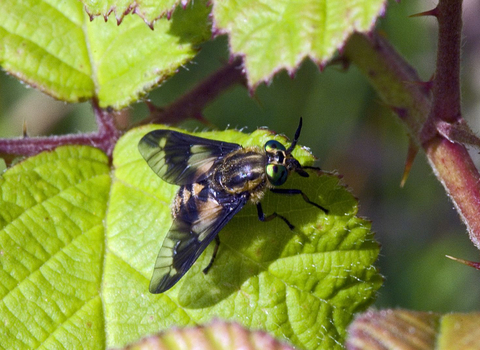
Twin-lobed Deer-fly ©Les Binns
Twin-lobed deer-fly
Many of us have felt the painful bite of the Twin-lobed deer-fly (a 'horse-fly') while out walking in damp grasses or woods. But mostly, it prefers to feed on the blood of cows and ponies, often becoming a pest.
Enw gwyddonol
Chrysops relictusPryd i'w gweld
May to SeptemberGwybodaeth am rywogaethau
Categori
Ystadegau
Length: 1cmCommon.
